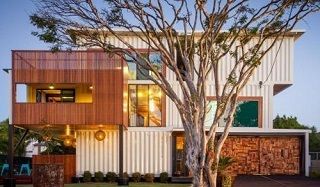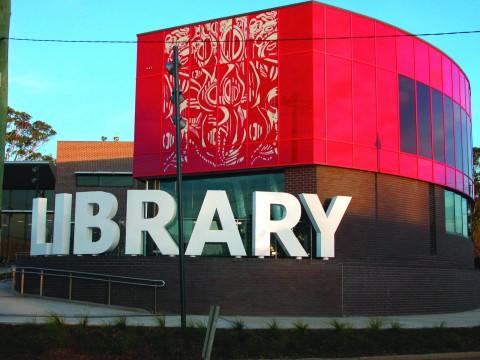From Guest Blogger Sophie: Green Building Trends in Australian Architecture

Truly a monotonous and somewhat humiliating notion, given the fact that there are so many natural and eco-friendly alternatives that can be used to create genuine architectural marvels. In order to prove this point, one would not have to go far, but just examine examples in Australian architecture. Here anyone can find a perfect examples of sustainable buildings, made out of completely eco-friendly materials, which are counted amongst few wonders of architecture.
Ziegler Build Shipping Container Home (shown above) A famous Australian architect Todd Miller, constructed this wonder of Architecture mostly with the use of recycled shipping containers. Although the use of shipping containers as an eco-friendly and reliable material is on the rise in popularity in Australia, built out of the 31 shipping container, this home is largest of its kind. Because of the very aesthetical nature of the shipping containers’ rough industrial exterior, no further works on building’s facade were necessary in designing this particular building.
Why recycling these shipping containers into a construction material is particularly useful and practical, we found out in our recent interview with guys working at Royal Wolf, Australia’s largest exporter of shipping containers. As these containers are made to be resistant to some of the harshest weather and climate conditions on the planet, as well to be flood-and fire proof, homes made out of this material require little or no additional investment into their isolation and protection.
Also, there are around 17 million shipping containers in the world, using one already made as a construction material is countless times more eco-friendly then simply resorting to new exploitation or production of new materials.
Shark Bay Interpretive Centre
This magnificent building, located in the town of Denham in Western Australia, is a perfect example that eco-materials are indeed sometimes hard to classify. What this means is that classification of materials on eco-friendly and those who are not, often vary based on geographical location. Sometimes all that certain material has to do in order to be considered as eco-friendly, is to be a local material, making its transport easy, short and cheap.
Because of the recognition of its usefulness and practicality many collecting institutions and heritage centers, all across Australia were soon to follow in this fashion. A new library at Narellan, New South Wales is just another perfect example of all of this. With its multiple purposes as library, civic square, youth center and community space it is a perfect example of substantial savings that can be made both on financial and global ecological level, by careful planning and organization.
All of these eco-friendly materials are not just friendly towards the nature but also towards the budget and time of its builder. They are also often more reliable, practical and durable than some other, more common, or mainstream, construction materials. With all this in mind, using eco-friendly materials for modern, both private and public buildings, surely looks like a win-win scenario. Therefore, one could say with safety, that from this point of view, the future of the architecture sure looks green.


